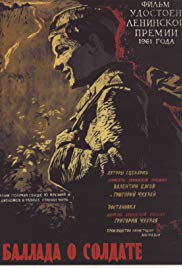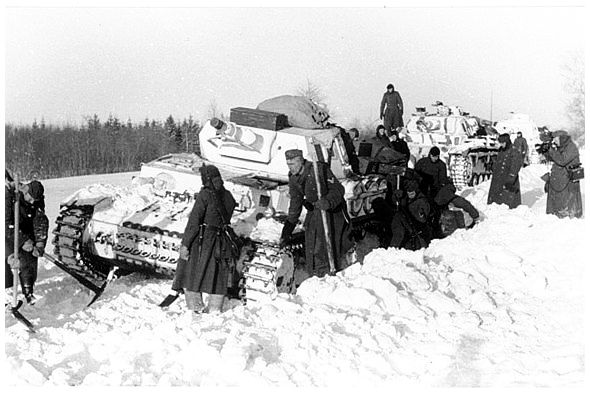Much of the Second World War was fought on Russian soil. By the Fall of 1941, the Germans had captured the Baltic nations, the Ukraine and most of European Russia. Usually when they occupied Russian territory the Germans found only burned villages and industrial plants that had been either removed beyond the Ural mountains or destroyed. But in the Baltic states, Byelorussia, and the Ukraine, many citizens who had been alienated by harsh Stalinist rule welcomed the invaders.
Millions of Soviet soldiers were captured after the German armies encircled them. Some were simply annihilated while others were sent to slave labor camps. There were 1,250,000 Russian military and civilian casualties from the siege of Leningrad alone.
The German invasion stalled in the winter of 1941. The advance on Leningrad was checked in September 1941, and the advance on Moscow was turned back a month later. However, the Germans did not give up easily. The Russians permanently gained the offensive only after the battle of Stalingrad which raged from August 1942 to January 1943.
The cost of the war to the Soviet Union was twenty million people killed, thirteen million military and seven million civilian. The United States, in comparison, suffered no civilian losses and about 400,000 military deaths in all of WWII. The entire British Empire and all of the Commonwealth nations suffered 452,000 military deaths and 60,000 civilian deaths in the war. Germany, despite its defeat, suffered less numerically than the Soviet Union with 3,500,000 military deaths and 3,800,000 civilian deaths. Note that because Germany had a smaller population than the Soviet Union the relative effect of the casualties on Germany is not reflected in this comparison.
In addition to the loss of life, the European portion of the Soviet Union, its most developed area, was devastated.
During the Second World War, the United States provided Russia with eleven billion dollars worth of food, weapons, and other materiel through the lend-lease program. The canned beef with which Alyosha bribed the sentry could very well have been supplied by the Americans.



